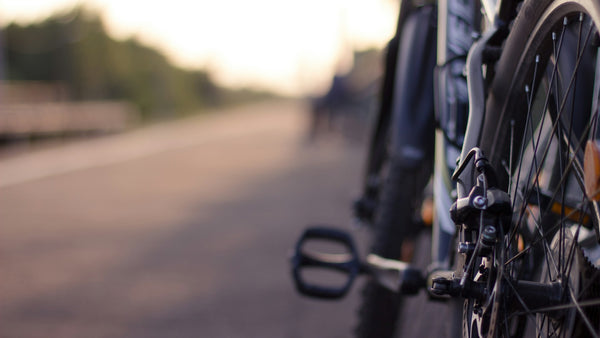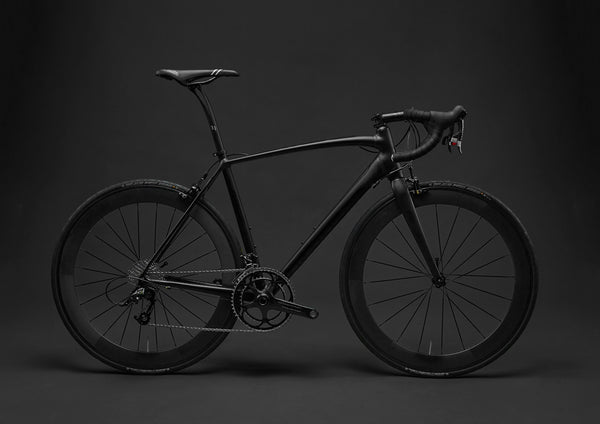The Giro d’Italia has a well-earned reputation for being the true cycling fan’s favorite Cycle Grand Tour. There are many factors that go into justifying this. For one thing, since the mid-1990s, it has had the pride of place as the first Grand Tour of the season. That means all cycling fans and riders are still super excited for the racing. Fitness levels have had time to develop and motivation is high before mid-season burnout has had time to set-in.
So even if the Tour de France is the unquestioned “most important race of the season” and the Vuelta a Espana has its own charms like innovative stage designs and crazy steep Pyrenean climbs, the Giro holds a special place in the hearts of riders and fans alike.
A short history of Giro d'Italia
The Giro d’Italia first took place in 1909, just six years after the first Tour de France, and has been held every year since then, except for four years during the First World War and five years during the Second. By contrast, the Vuelta was first held in 1935, and didn’t really get well established on the calendar until 1955.
Similarly to the Tour, which was established to help increase sales for the newspaper L'Auto (a precursor to today’s L'Équipe), the Italian newspaper La Gazzetta dello Sport saw how effective the Tour de France had been at increasing sales for L’Auto, so decided to establish a race of their own.
As with the Tour de France, it took the Giro a while to settle into the type of race we would recognize today, with 21 stages over the course of three weeks. But the race was always long – with even the first edition covering nearly 2500 km in eight stages.
The first few decades of the race naturally enough were dominated by Italians. The country was held spellbound by the rivalries that developed between Alfred Binda and Gino Bartali, and between Bartali and Fausto Coppi. It wasn’t until 1950 that the first non-Italian won. Swiss rider Hugo Koblet took that victory the year before he would win the Tour de France.
Fausto Coppi, one of the greatest cyclists of all time, would also be the first rider ever to win both the Giro and the Tour in the same year, accomplishing this feat in 1952. Though a few other riders have managed to do this as well, including Eddy Merckx, Bernard Hinault, and Miguel Indurain, the double hasn’t been done since 1998 when Marco Pantani won both races. Perhaps that record might change in 2024 when the stars could just possibly align for Tadej Pogačar as he targets both races.
The only American winner of the Giro
Andy Hampsten, who famously took the lead in the race on a snow pummeled day in 1988, remains the only American ever to have won the Giro. He and his 7-Eleven team were initially viewed as a bunch of upstart Americans who were causing all the crashes in the peloton.
But the whole team and Hampsten in particular were able to prove everyone wrong. HIs first flash of success came when he won a stage in the 1985 Giro, but his real Italian triumph would be in 1988 when he and his team of Americans beat the Euros in the harshest conditions. By winning a mountain stage, taking 2nd on the Gavia stage, and winning the individual time trial, Hampsten and his 7-Eleven teammates were able to make history.
Though the squad had fears of sabotage through drink spiking or intentional food poisoning, by the time he won the race, Hampsten had managed to win over the Italian public. Cycling aficionados in Italy still think of him as “il nostro Andy” or “our Andy”. That Hampsten speaks excellent Italian and keeps a residence in Tuscany only adds to his appeal for the cycling-loving Italians.
Italy looking for its next great champion of the Giro
If the early decades of the race were dominated by Italian winners, in recent years Italian victories have been much rarer. Now retired Vincenzo Nibali was the last Italian to win the race, having won it in 2016 and 2013. Since then, we’ve seen riders like Chris Froome, Alberto Contador, Richard Carapaz, Jai Hindley, Tao Geoghegan Hart, Egan Bernal, and last year’s winner Primož Roglič out-pace home-grown stars.
Will we see an Italian winner of the Giro in 2024? Judging by the fact that Tadej Pogačar is planning on racing, it seems quite unlikely. Indeed, if all goes to plan and he doesn’t suffer a race-ending crash, a win at the Giro will be the first step to doing the Giro-Tour double for the Slovenian phenomenon.
Though Italy has very strong riders like Filippo Ganna and Damiano Caruso, the only Italian rider currently on the startlist who has been showing exceptional form in stage races this spring is Antonio Tiberi, who recently took 3rd at the Giro warm-up race, the Tour of the Alps. But the competition there was not at the top level, especially since Pogačar was not racing. And anyways, in 2023 Tiberi was convicted of killing a cat in Italy with an air gun, so he has fallen way off our list of worthy winners.
Is there a non-Pogačar favorite?
Maybe. If Pogačar shows up with the type of form that won him this season’s Strade Bianche with an 80 km solo breakaway, then barring any accidents, it’s hard to imagine any of the riders currently listed as racing will be able to give him a real run for his money. However, the general consensus is that the Giro route for 2024 is less strenuous than in past seasons, which may help to level the playing field a bit more.
Anglophones can root for Geraint Thomas from the INEOS Grenadiers. He took 2nd in the Giro last year, and led it for a good deal of the race, until Primož Roglič dramatically won control of the pink jersey and the race in the final uphill time trial. Roglič won’t be here to defend the jersey, putting Thomas first in line as a legitimate contender. Since INEOS races on the Pinarello Dogma F, we often find ourselves rooting for the bike brand.
French and Australian fans would be happy to see Ben O’Connor, racing for the newly branded Decathlon AG2R La Mondiale Team, do well at the race. He has won stages in the Giro and Tour before, and took 4th place in the 2021 Tour that Pogačar won. At the recent Tour of the Alps, he showed good if not great form. But he’ll have a couple weeks to refine his condition before the start of the Giro in Turin, and has a strong team supporting him, including former US national champion Larry Warbasse, so he can have high hopes for a podium position if all goes to plan.
Scanning the incomplete start list, it becomes apparent that if Pogačar wasn’t racing, this would be the most open Giro d’Italia in years. Aside from Thomas and O’Connor, there’s Romain Bardet, who twice finished on the Tour de France podium but has become more of a stage hunter and one-day racer in recent years. Then there’s Luke Plapp and Eddie Dunbar for Team Jayco AlUla, both of whom have GC ambitions but still only show promise instead of promises fulfilled.
Lidl – Trek’s Juan Pedro López just finished winning the Tour of the Alps. His performance there was exceptional since he won a mountain stage with a solo break that gained 38 seconds on all the hardest competition, including Ben O’Connor. And then he defended the lead over two very difficult stages where he was under constant attack, frequently without teammates and forced to cover attacks on his own. The stage win was his first pro win, and the overall victory of course his first stage race win, so he’s not necessarily a proven quantity, but he certainly looks to be on good form with enough tactical know-how to use his team well and defend himself solo, too. If he can stay safe on the flatter stages and not lose too much time in the time trials, we see López as a definite leading contender for a podium place.
Who else? If you close your eyes and listen to commentators talking about Nairo Quintana racing for the Movistar Team, you could be forgiven for thinking you are back in the fog of 2014. But fast forward ten years, and Quintana is back with his old team and aiming for Giro success again. He hasn’t set the world on fire in 2024, though. Most recently he DNF’d at Volta Ciclista a Catalunya, a race dominated by Pogačar. But Quintana has proved in the past that he can be very good at choosing his times to peak. He’s also one of the rare small climbers who can handle themselves well in echelon conditions and on gravel, both of which the Giro peloton will face over the three weeks.
Shed a tear for Wout Van Aert
Team Visma-Lease a Bike’s Wout van Aert was supposed to be racing the Giro, and though he was downplaying his chances for the GC, he certainly would have electrified the race. But his season has been upended after a devastating crash at Dwars door Vlaanderen - A travers la Flandre, where he broke several bones including multiple ribs and his sternum. That crash ruined his classics campaign where he was aiming finally to get a victory at Tour of Flanders and/or Paris-Roubaix.
Looking on the bright side, the Giro’s loss is the Tour de France’s gain. But Team Visma-Lease a Bike is also facing the potential loss of two-time defending champion, Jonas Vingegaard, who crashed hard, along with Roglič, Remco Evenepoel, among others, at the Tour of the Basque Country. Though Evenepoel and Roglič look on course to be fit for the Tour, big question marks remain over defending champion Vingegaard. And even if he is fit enough to make it to the Tour, will he be up to his usual Tour de France-winning condition? If not, we may well see Pogačar do the Giro-Tour double.
The 2024 season could be impacted as much by who was not able to race as who was actually racing.
Conclusion - everyone loves the Giro d'Italia
No matter who is racing or what the course looks like, the Giro d’Italia always provides a huge level of entertainment thanks to the scenery, hard-fought battles, and frequently complicated weather conditions. It’s been a crazy spring, both in terms of dramatic crashes for riders and unstable weather patterns. No matter who ends up on the top step of the podium when the race finishes in Rome on May 26th, it’s sure to be a wild ride.


































































































































































































































































